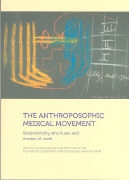Ulteriori informazioni
Rudolf Steiner is known around the world as an author, lecturer and the creator of Anthroposophy, but his role as an inaugurator of new forms of collaboration has yet to be discovered in many places. Anthroposophic institutions are among those grappling with the special challenge of how to develop viable forms of leadership and management. The social idea developed by Rudolf Steiner in 1923/24 can serve as an inexhaustible source of inspiration for anyone who wants to unite the principles of spiritual guidance and leadership with those of professional responsibilities and the necessities of the workplace. In Steiner's conception of the anthroposophic movement he designated the leaders of the various sections of the School of Spiritual Science. He invited the members of the Anthroposophical Society to confirm or vote for the Executive Council. For the leadership of the School of Spiritual Science, in contrast, he thought in terms of a collegium made up of the section leaders. This is an example of a style of leadership with a heart, in which the principles of individual responsibility, collegial leadership and democratic participation are combined. The authors of this book show how this trinitarian social structure has proved its value and has developed in the anthroposophic medical movement since 1988. The latter movement has been working to develop a concept of leadership that enables "the peace-endowing principles of spiritual guidance and leadership to constructively augment the necessities of today's working environment."
Riassunto
Rudolf Steiner is known around the world as an author, lecturer and the creator of Anthroposophy, but his role as an inaugurator of new forms of collaboration has yet to be discovered in many places. Anthroposophic institutions are among those grappling with the special challenge of how to develop viable forms of leadership and management. The social idea developed by Rudolf Steiner in 1923/24 can serve as an inexhaustible source of inspiration for anyone who wants to unite the principles of spiritual guidance and leadership with those of professional responsibilities and the necessities of the workplace. In Steiner's conception of the anthroposophic movement he designated the leaders of the various sections of the School of Spiritual Science. He invited the members of the Anthroposophical Society to confirm or vote for the Executive Council. For the leadership of the School of Spiritual Science, in contrast, he thought in terms of a collegium made up of the section leaders. This is an example of a style of leadership with a heart, in which the principles of individual responsibility, collegial leadership and democratic participation are combined. The authors of this book show how this trinitarian social structure has proved its value and has developed in the anthroposophic medical movement since 1988. The latter movement has been working to develop a concept of leadership that enables ?the peace-endowing principles of spiritual guidance and leadership to constructively augment the necessities of today's working environment.?

